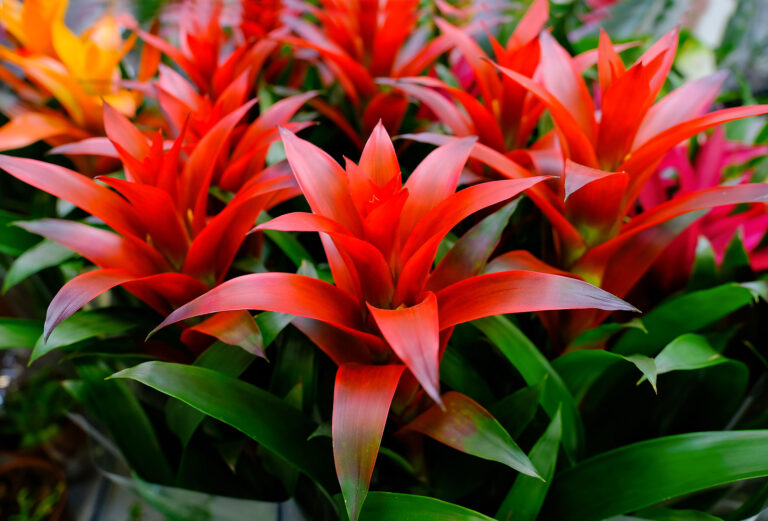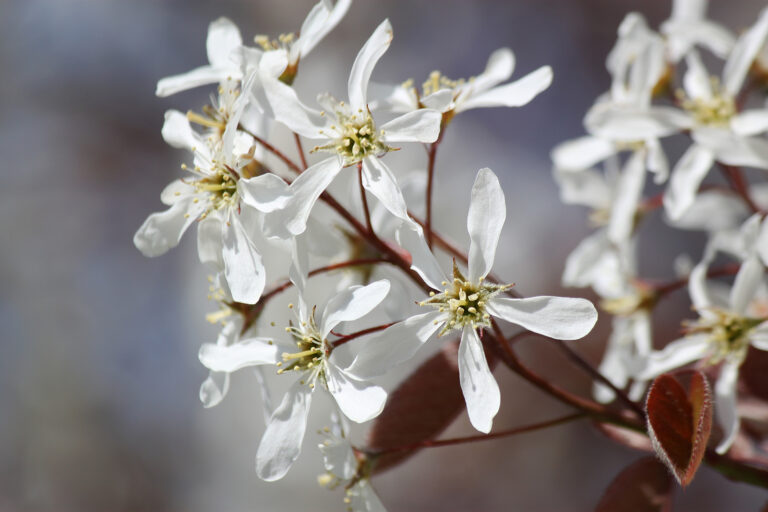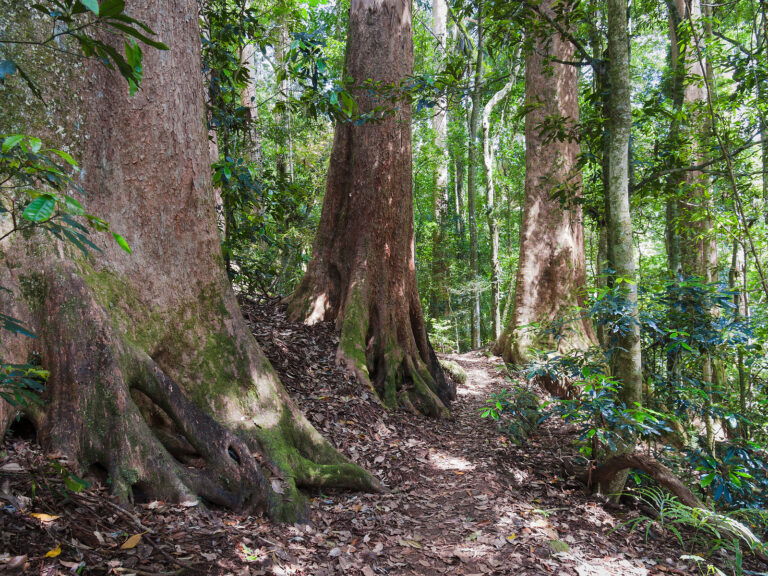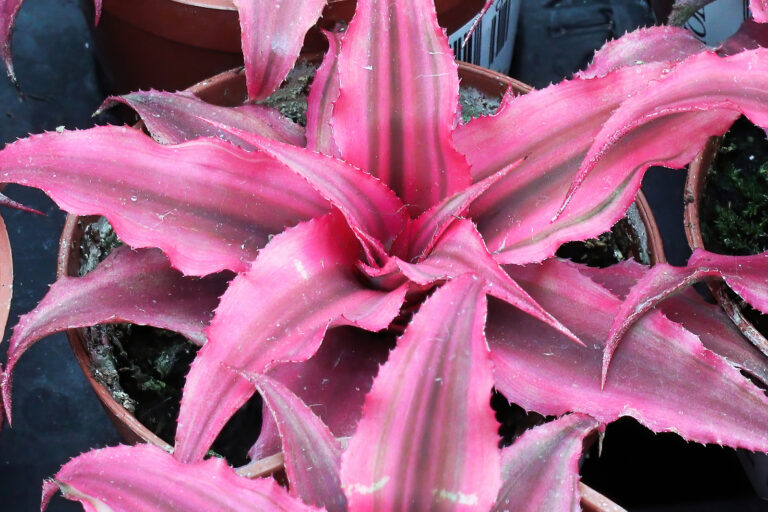How to Grow Sago Palm — Cycas
Cycas–commonly called sago palm–is a palm-like evergreen plant that belongs to the Cycadaceae family, or cycads. Cycads are neither ferns nor palms; they are cone-bearing relatives of conifers; they are ancient plants.
Cycas bear a rosette of dark green, featherlike leaves that grow from a central point at the top of a single trunk, sometimes multiple trunks. Cycas grow very slowly, 10 years or more to reach 10 feet tall.
Cycas make excellent specimen trees and also indoor potted plants.
Cycas is a genus of about 15 species of cycads. They are found mainly on dry, stony slopes or dry woodlands from Madagascar to the south and southeast Asia, Australia, and the Pacific Islands.
Get to know Cycas
- Plant type: Cycad (not a true palm)
- Growing zones and range: Zones 13-15
- Hardiness: Tender
- Optimal growing temperature: day, 68° to 75°F (20° to 24°C); night, 60°F (16°C).
- Height and width: Grows to 3 feet to 6 feet (1-2m) tall or more and 10 feet (3m) wide or more.
- Foliage: Arching compound fronds to 3 feet in length emerge from a stubby trunk; these palmlike foliage plants (not true palms) have rigid fronds growing from a thick trunk resembling a pine cone; leaves are stiff, leathery, with linear-lance-shaped leafletts..
- Flowers: Cone-like inflorescences arive fro the centers of leaf rosettes
- Bloom time: Summer
- Uses: Specimen tree, houseplant
- Common name: Fern palm, sago palm.
- Botanical name: Cycas
- Family name: Cycadaceae
- Origin: Dry woodlands from Madagascar to Southeast Asia dn Australia
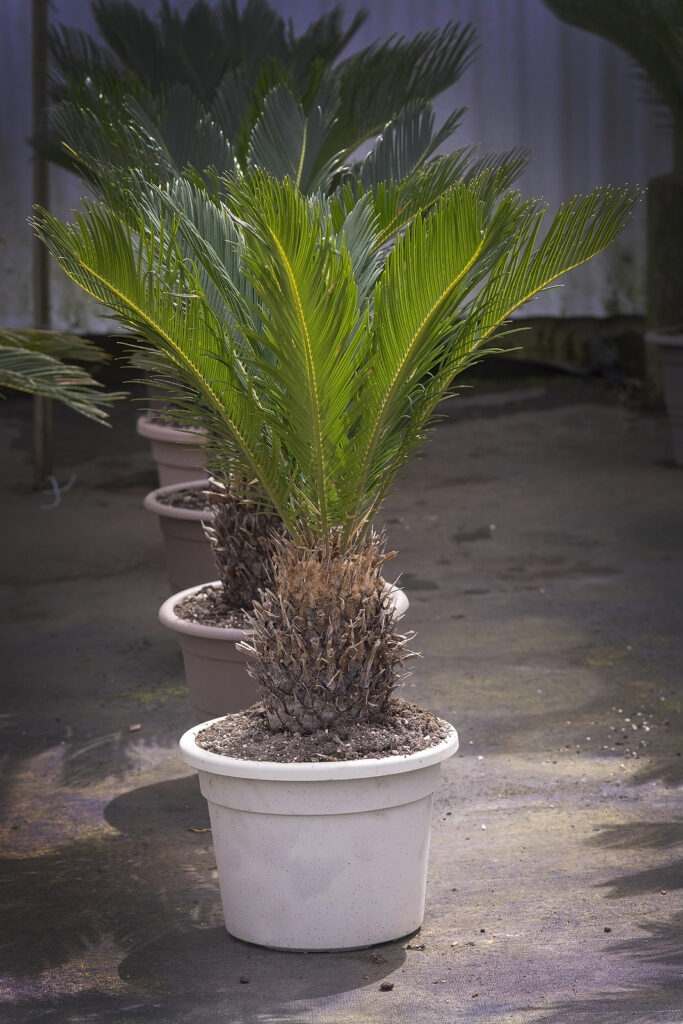
Where to plant Cycas
- Light indoors: Bright light, no direct sun from northern, eastern, or western exposure. Give sago palm bright light all year long.
- Light outdoors: Full sun with shade from the hot sum.
- Soil indoors: Mix 2 parts standard potting soil, 2 parts peat moss, and 1 part vermiculite. Half cactus mix and half all-purpose soil mix.
- Soil outdoors: Grow in fertile, moist, but well-drained soil.
When to plant Cycas
- Set outdoors Cycas outdoors any time of the year in tropial regions.
Planting and spacing Cycas
- Space Cycas 10 feet (3m) apart.
How to water and feed Cycas
- Water: Let soil dry slightly between thorough waterings. Mist Cycas daily. Cycas prefers humidity of 65% to 70%.
- Feeding: Fertilize Cycas monthly from early spring to late summer with a mild liquid fertilizer.
Cycas care
- Repot Cycas every other year in a combination of half cactus mix and half all-purpose soil mix.
- Handle Cycas carefully; the foliage bruises easily.
Growing Cycas as a houseplant
- Give Cycas bright light all year long.
- Give Cycas an average room temperature and low to medium humidity.
- Water thoroughly, then allow the soil to dry moderately before watering again.
- Fertilize Cycas once a month from early spring to late summer.
Cycas pests and diseases
- Cycas can be attacked by aphids, mealybugs, spider mites, and scale insects.
- Cycas is susceptible to salt buildup.
Cycas propagation
- Cycas is propagated by offsets or seeds.
- Cycas is a very slow grower and propagation can be difficult.
Cycas varieties to grow
- Cycas circinalis, queen sago. Specimen plant grows to 20 feet tall with graceful, drooping leaves; grows 8 to 20 feet tall and half as wide.
- C. revoluta, sago palm: Slow growing to 10 feet tall; has glossy dark green leaves. Individual leaflets are needlelike, from 3 to 6 inches long and arranged in a V shape along a prominent vein in the center of leaf.


